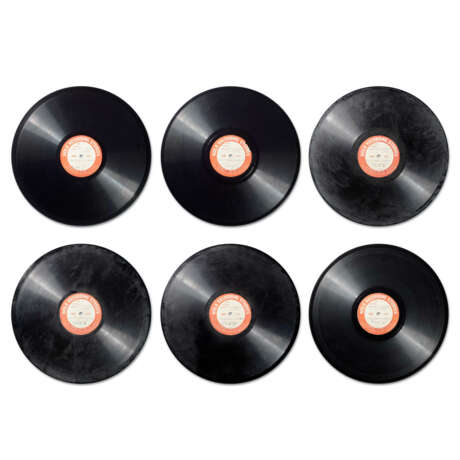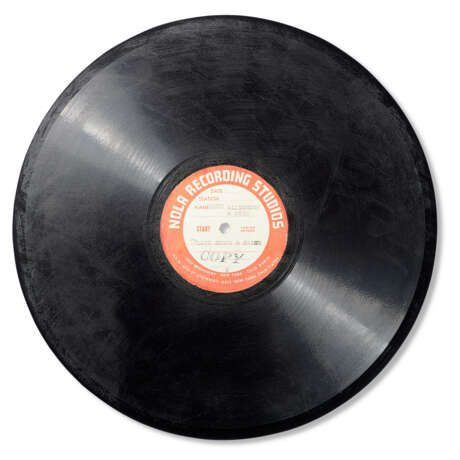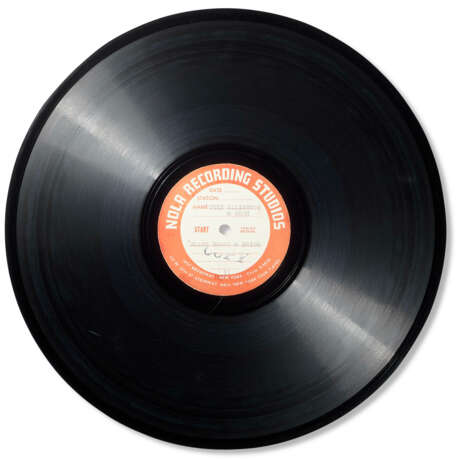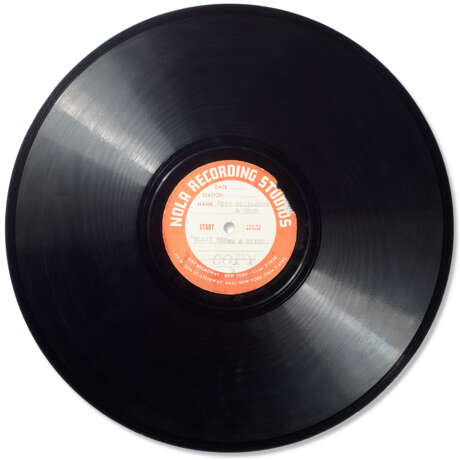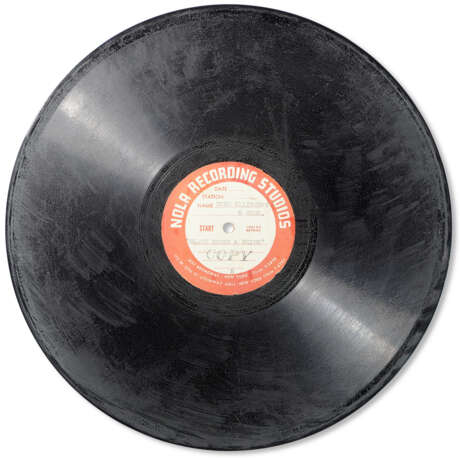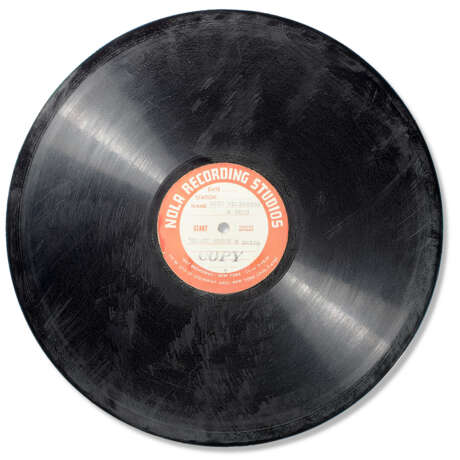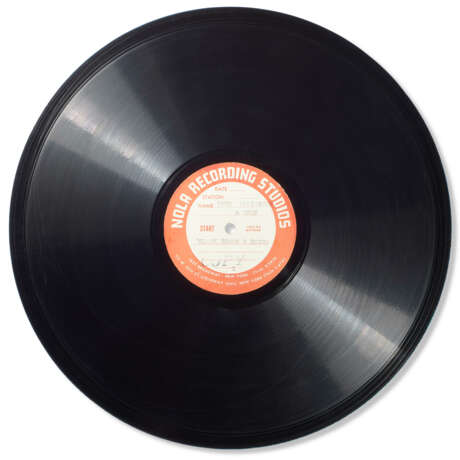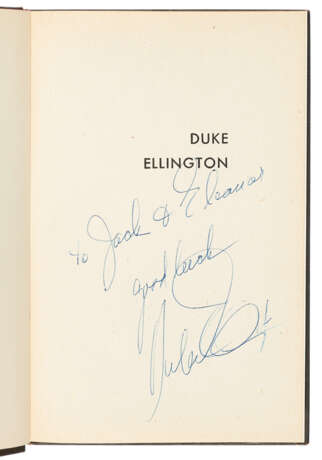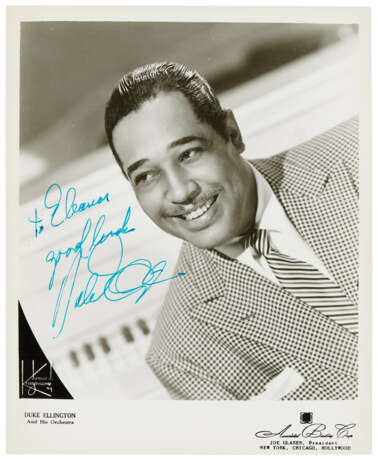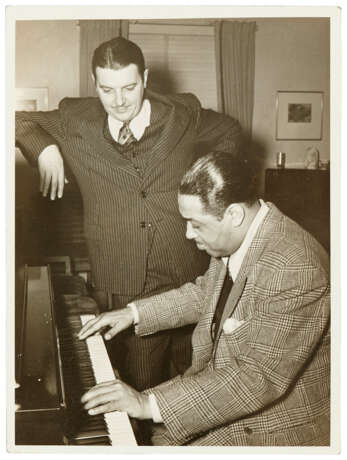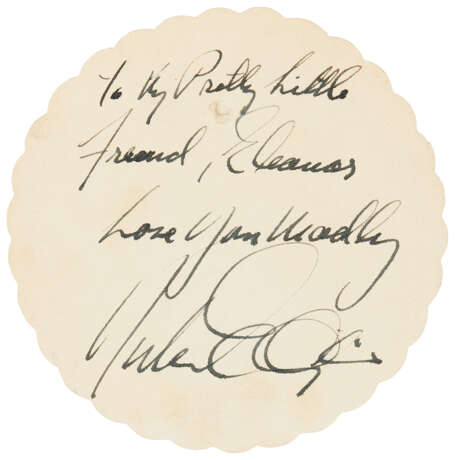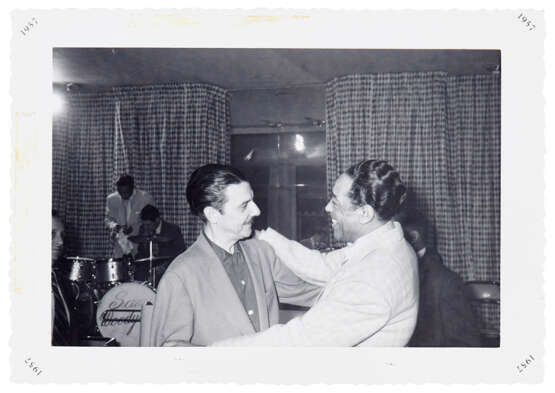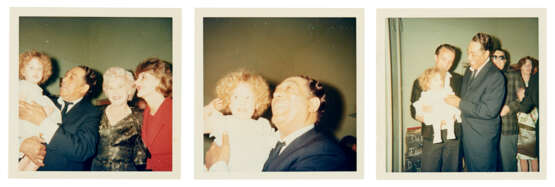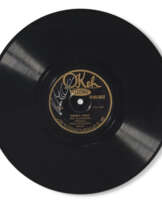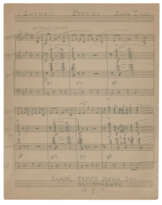Rare set of six 12-inch acetates of the debut performance of Duke Ellington’s ambitious extended composition Black, Brown and Beige: a Tone Parallel to the History of the American Negro by Duke Ellington and his orchestra at Carnegie Hall, New York, 23 Ja
28.09.2023 13:00UTC +00:00
Classic
Verkauft
6300GBP £ 6 300
| Auctioneer | CHRISTIE'S |
|---|---|
| Veranstaltungsort | Vereinigtes Königreich, London |
| Aufgeld | see on Website% |
Archiv
Die Auktion ist abgeschlossen. Es können keine Gebote mehr abgegeben werden.

ID 1016513
Los 159 | Rare set of six 12-inch acetates of the debut performance of Duke Ellington’s ambitious extended composition Black, Brown and Beige: a Tone Parallel to the History of the American Negro by Duke Ellington and his orchestra at Carnegie Hall, New York, 23 Ja
Schätzwert
£ 4 000 – 6 000
Edward Kennedy ‘Duke’ Ellington
ELLINGTON, Edward Kennedy ‘Duke’ (1899-1974).
Rare set of six 12-inch acetates of the debut performance of Duke Ellington’s ambitious extended composition Black, Brown and Beige: a Tone Parallel to the History of the American Negro by Duke Ellington and his orchestra at Carnegie Hall, New York, 23 January 1943.
Following extensive media hype, Duke Ellington debuted his 45-minute multi-part work Black Brown and Beige to a packed Carnegie Hall on 23 January 1943. ‘Celebrities were practically hanging from the chandeliers,’ reported the New York Post. Ellington’s groundbreaking composition, explains historian Harvey G. Cohen, ‘programmatically illustrated black history from the African continent to the African American contribution in World War II.’ For Ellington, who enjoyed an unrivalled crossover popularity with white audiences at the time, music served as a non-confrontational form of activism that allowed him to challenge racial inequality through a focus on black history, while at the same time circumvent and subvert racial stereotypes by ‘carefully cultivating an image of respectability and “genius”’. Despite a rapturous audience response to the Carnegie concert, a lukewarm critical reaction to the work ‘became a notorious snub that reduced Ellington’s confidence in his work.’ Cohen theorises that the negative response was a consequence of critics only having the opportunity to hear the complex composition once, as ‘it is not a work that reveals itself in one hearing’. Black, Brown and Beige would be performed in its entirety only once more - at Boston’s Symphony Hall on 28 January. ‘Future performances consisted of excerpts only, writes biographer Stuart Nicholson, ‘and the composition was never recorded in the studio in full.’
Musicologist Andrew Homzy confirms that the historic concert ‘was recorded by technicians at Carnegie Hall, and copies of the original acetate discs circulated among a small circle of record collectors.’ On Ellington’s direction and for his private use, four sets of acetates were cut from tape transfers of the Carnegie recordings, which were sent across the road to the famous Nola Recording Studios at Steinway Hall on West 57th Street after the concert. The present set was passed to Ellington’s close friend and supporter Jack Barker, who received a mention in Duke’s 1973 autobiography: ‘starting with my first visit to Canada, when we were playing the Shea Theatre in Toronto [a one-week engagement starting 7 June 1935], I had made two close friends in Jack Barker and Robert Favreaux... I spent much of my time with them in Canada.’ A second set is held at the Library of Congress as part of the Valburn/Ellington Collection, while the rumoured third and fourth sets have not yet surfaced. Despite the circulating acetates and bootlegs, the Carnegie Hall concert was not released commercially until after Ellington’s death, by Prestige in 1977. Regardless of whether it was viewed as an artistic achievement, Black, Brown and Beige, stated Cohen, allowed Ellington to establish himself as a unique force in the American musical scene, a focus for American and African American pride and achievement, a figure of commercial strength and historic importance who, more than any other musician at the time, could stretch out in almost any artistic direction he wished. Cohen, 203, 211, 234, 242. Cook & Morton, 435. Ellington, 137. Homzy, in Black Music Research Journal, 13(2), 87. Nicholson, 246.
One single-sided and five double-sided acetates with red and white ‘Nola Recording Studios’ labels numbered 1 to 11, with typewritten details ‘DUKE ELLINGTON & ORCH / BLACK BROWN & BEIGE / COPY’, in brown paper sleeves, and housed in an aluminium flight case; accompanied by an archive of material related to Ellington’s visits to Jack Barker and his family in Toronto, including:
- ULANOV, Barry. Duke Ellington. New York: 1946. First edition, second printing, signed and inscribed in blue ballpoint pen on the half-title by Duke Ellington ‘to Jack & Eleanor, good luck, Duke Ellington’;
- white paper coaster for the St. Regis Hotel, Toronto, c.1950s, warmly inscribed in black ink by Duke Ellington ‘To my Pretty Little Friend, Eleanor, Love You Madly, Duke Ellington’;
- Four gelatin silver publicity portraits of Duke Ellington, c.1950, one signed and inscribed in turquoise ink by Ellington ‘To Eleanor, good luck, Duke Ellington’;
- a group of eight unpublished personal photographs, 1950s-60s, including four deckle-edged vintage gelatin silver prints, dated Saturday 16 February 1957 - two of Duke at the microphone, one of Barker and Duke warmly embracing, another of Barker with Johnny Hodges - with later enlargements and negatives, a matte black and white photograph of Ellington at the piano with Barker, a passport-sized candid shot of a laughing Ellington sporting a cravat, together with three colour photographs of Ellington, laughing and smiling, in an intimate family setting, various sizes, the largest 175 x 130 mm;
- a group of 1950s/1960s ephemera, including the business card of longtime Ellington trombonist Lawrence Brown and nine concert programmes.
Further details
These recordings, photographs and negatives are offered for sale without copyright, broadcast rights, performers consents and other reproduction rights. The buyer must apply to the relevant parties to obtain such clearance and consents as may be necessary.
| Adresse der Versteigerung |
CHRISTIE'S 8 King Street, St. James's SW1Y 6QT London Vereinigtes Königreich | |
|---|---|---|
| Vorschau |
| |
| Telefon | +44 (0)20 7839 9060 | |
| Aufgeld | see on Website | |
| Nutzungsbedingungen | Nutzungsbedingungen |
